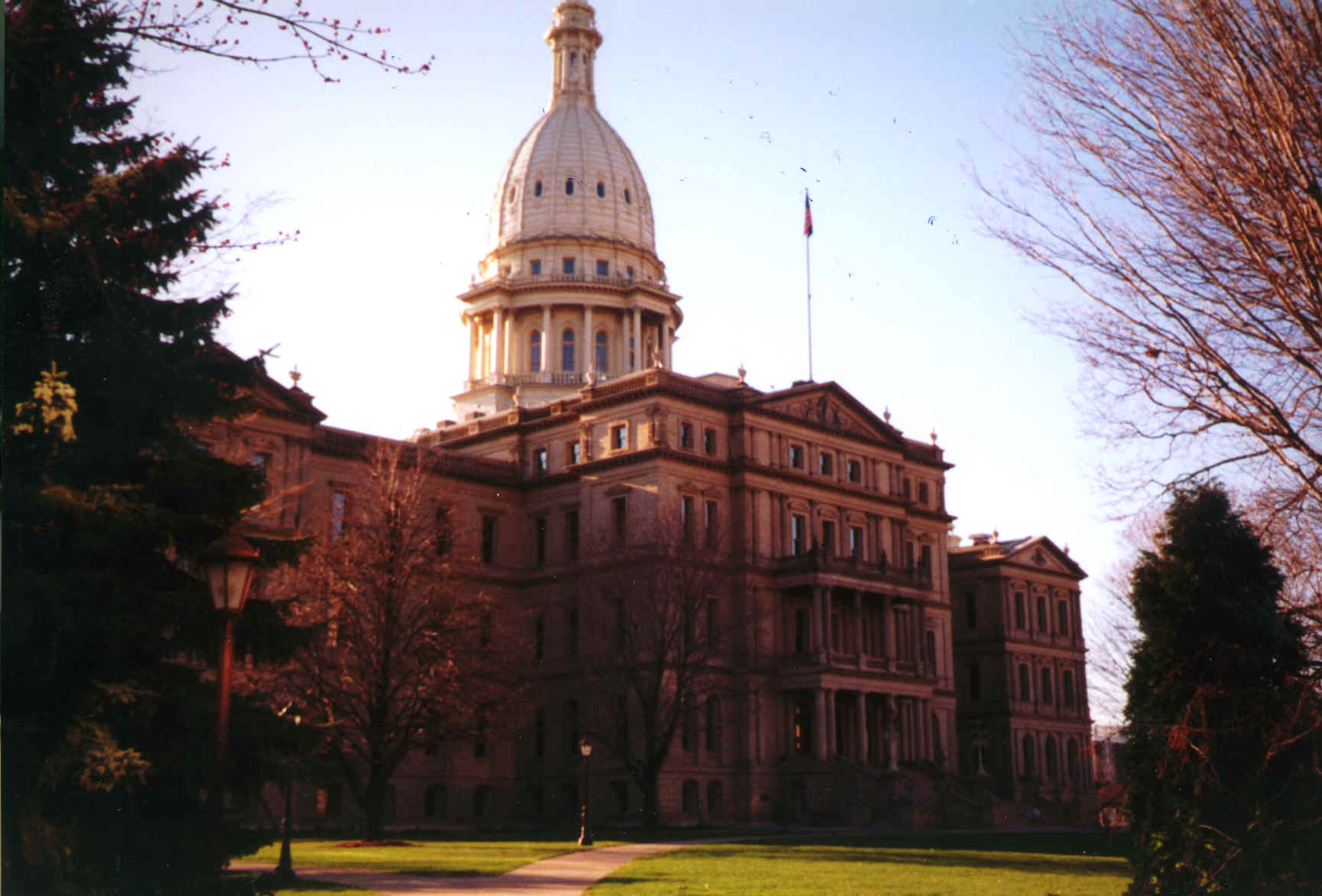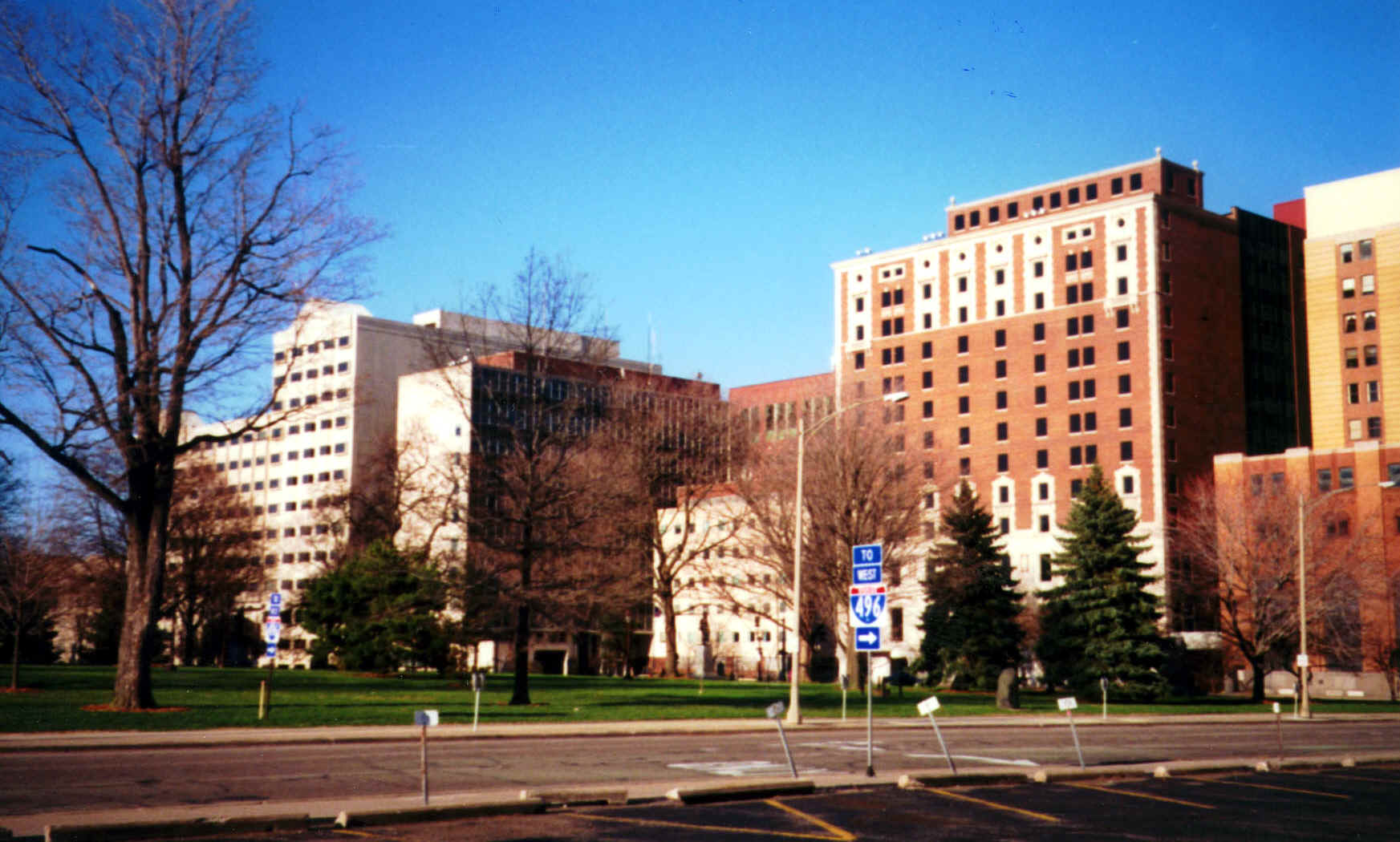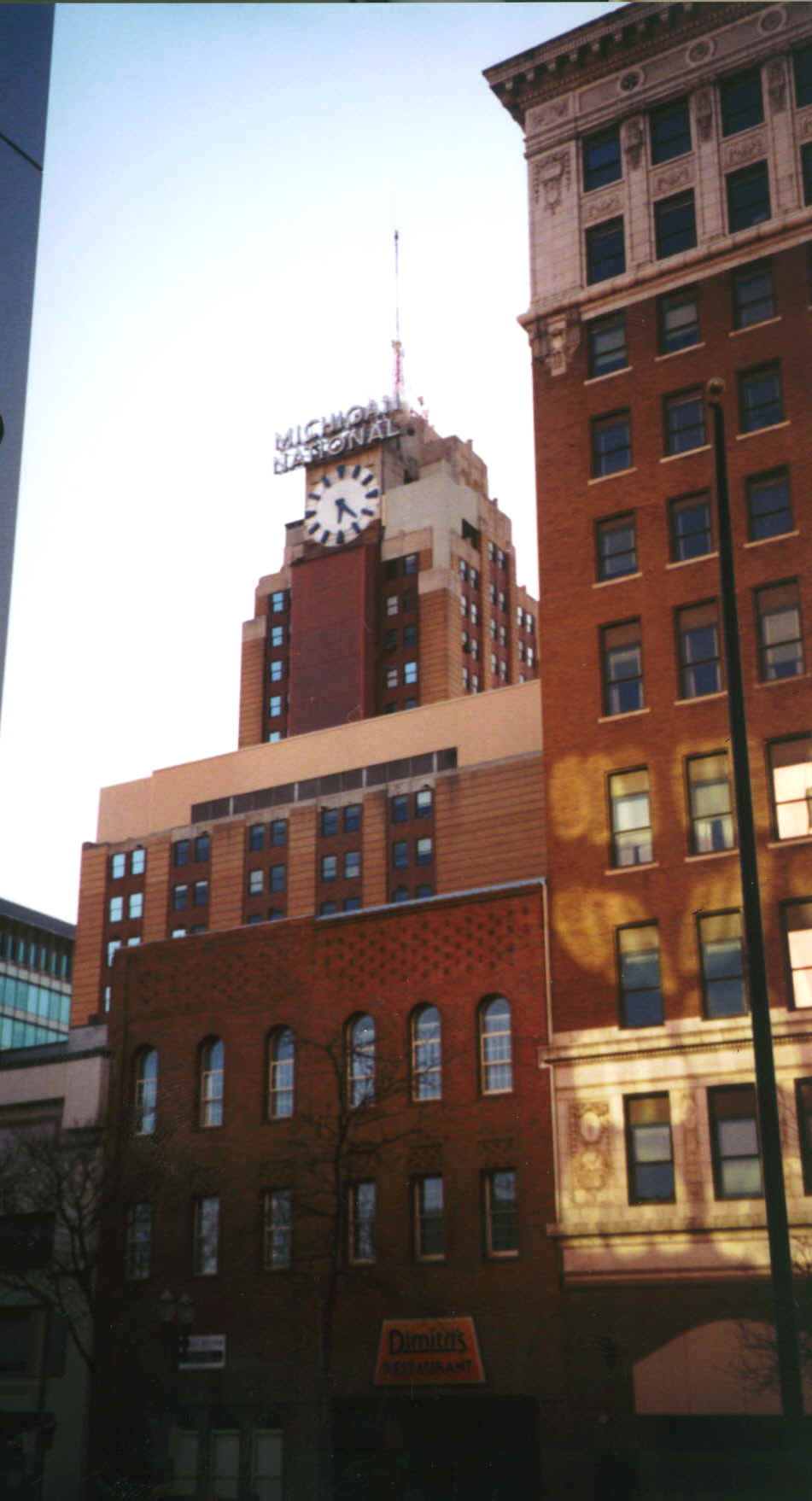Lansing, the capitol of Michigan, is located in the south central part of the state and lies within Ingham, Clinton, and Eaton counties. Lansing is a very different and distinct community. It contains parts of Michigan’s automotive industry, some agricultural farming, the state’s government, and neighbor’s one of Michigan’s largest Universities; Michigan State University in East Lansing. These features, amongst others, make Lansing a wonderful place to visit, live and learn.History
Lansing, like many other places in America, has a very interesting history. The first permanent settler in Lansing Township was Jacob Frederick Cooley. Cooley had originally settled in the town of Leslie, then moved to New York. He later traveled back to the Lansing area with his family, and settled in Lansing in 1837. There were many obstacles that the family had to face. The area known as Lansing today was virtually wilderness. In the 1830’s Lansing was named "Biddle City". This is the area where Mt. Hope Avenue is today. It was intended to be the settlement area in Lansing, but never took of until years later.
The city was given the name "Lansing" by the first settlers that came to the area in the mid 1800’s. Many of the early settlers came from the state of New York looking for a new life. They named their new city after John Lansing, an American jurist and political leader from New York.
The state capitol was moved to Lansing in 1847 from Detroit. That year, there were only 8 registered voters within Lansing. The only industry in Lansing was a sawmill. Needless to say, many of the settlers whom had traveled from afar were disappointed in their new purchase. Those who had purchased land in Biddle City arrived in time to see the Grand River flood over and cover the entire area.
One of the reasons Lansing began to prosper in the late 1800’s is due to the developing automotive industry. Ransom Eli Olds, a native of the city of Lansing, was the founder of the Oldsmobile division of General Motors. The division was founded in 1897, and Lansing was chosen by Olds to house the headquarters of his car company. There is a local museum dedicated to Olds, where one can witness the remarkable inventions that R.E. Olds came up with.
The Downtown location of Lansing in the year 2000 was not the same as it was in the late 1800’s. North Lansing, today know as "Old Town", was the original city center. It contained the area’s first business concerns, a dam on the Grand River and a sawmill. A few cabins were scattered in the surrounding wilderness. Old Town continued to be the central business district of Lansing up until the civil war period. The decline in activity was mainly due to the crash of the economy in 1893 and lumber boom decline. Most attention shifted to the area around the state capitol. However, Old Town was still important in many ways to the local people. It was a place where people north of Saginaw street came to shop and remained one of the busiest shopping districts in the area for some time. Many new buildings were also added along the strip of Grand River Avenue and vicinity, some of which still remain there today.
By the end of the second world war, Old Town was not looking so well. Many people were attracted to places elsewhere because of the modern building in other places in the city. The Victorian architecture that one gave the area much beauty and pleasure were now viewed with disdain. Development was directed elsewhere, and North Lansing fell into urban decay. Businesses began to move and close, upper apartments turned into low rent housing, and buildings began to rot. The future of Old Town did not look bright.
Finally, in the 1970’s, North Lansing began to get the care that it deserved. A group of people commonly called "bohemian types" began to flock to North Lansing, attracted to the low rent and different architecture. They began to fix up the area, and were able to get public funding to repair buildings and improve the look of the area. If this had not have happened, North Town would not have been here today. If these actions were not taken at that time, Old Town would not have survived.
But the story does not end there. The continuous restoration stopped in the 1980’s due to the Reagan-era cuts in funding for urban areas. However, in the early 1990’s, a new wave of preservation and development began, and this time it seems to be successful. The area today is busy with a number of small shops, restaurants and businesses within the old buildings.
Population
Lansing census of 1990 counted 127,321 people within the city. This number has grown in recent years, with many factors contributing to the growth. Also as of 1990, whites are 74.0% of the population, blacks next with 18.6%. Asians and Pacific Islanders are 1.7%, and Native Americans are 1.0% of the population. The remainder of the population are of mixed heritage or did not report ethnicity. Hispanics, who may be of any race, are 8.0% of the people.
State Government
Lansing houses many of the state government buildings, the main attractions being the
State Capital. However, Lansing was not always the center of Michigan’s government.
Shockingly, the city was developed by a legislative prank. Detroit served as
Michigan’s state capitol, until 1847, when legislators decided that the location was
in constant danger and voted to have it moved. The location of the new capitol building
was debated for some time, until someone jokingly suggested Lansing. At that time, Lansing
consisted of one log house and a sawmill. There was barely a road there to reach it. But
despite these factors, Lansing won the vote, and the capitol was moved there. A white
frame building served as the first capitol in Lansing, located near Michigan and Grand
Avenues. The present capitol is located west of the old capital, on Michigan and Capitol
Avenues. It was dedicated on January 1, 1879, and designed by Elijah E. Myers.

Source: Image Courtesy of Nicole Finney, GEO 333 Student
The building below are part of the State office complex, with the State Police building
the one on the left.

Source: Image Courtesy of Nicole Finney, GEO 333 Student
Sights
Lansing has many sights worth seeing within its limits. The State Capitol is a must see for anyone visiting the city. It resembles the nations capital, and is on of very few state capitols that is also a historical landmark. There are frequent tours that visitors can experience within the newly renovated building. The capitol is an considered an outstanding example of Victorian craftsmanship. Starting at the Rotunda, visitors can stand on glass tiles imported from England. Visitors can also view the Senate and House of Representative chambers, and witness pieces of the State’s history. If one is so inclined, they may stay and witness the state’s government in action.
There are many old buildings within Lansing that are very interesting to view. One such building is the Lansing Board of Water and Light (below). It can be seen from almost anywhere within the downtown area. It began in 1885 out of the rapidly growing need for adequate fire protection and clean drinking water. The original name was the Water Works Board. It evolved later in 1892 through a desire for cheaper and more desirable street lighting. The old building seen on Lansing’s skyline is not in running condition today. The current Board of Water and Light moved to a newer location in the 1960’s. However, the previous building is still seen as an important landmark to this day. Presently the Board of Water and Light is a $122 million dollar per year operation. It has come a long way, considering it was started for $100,000.
Source: Images Courtesy of David Baylis
The Knapps building on Washington Avenue is an interesting building worth seeing. It was build in 1937 by the Christman Company and designed by Bowd and Munson. It stands on the sight of the old Hotel Kerns, build in the 1910’s. The Hotel Kerns was destroyed by fire, and many people of Lansing were sad to see it go. The Knapps building soon took its place, giving the locals other topics of conversation. The Knapps building is a five story Art Deco building which stands on Washington Avenue still today. It created considerable attention in both the statewide and national press for its architectural innovation.
There is yet another Art Deco building that is very well known in the city of Lansing.
It is the Michigan National Bank tower (below), a high-rise building within the heart of
Lansing. It was completed in 1931 after two years of construction. Because R. E. Olds had
commissioned for the building, the tower was originally called "Olds Tower". It
stands an amazing 300 feet above the street surface as Lansing’s tallest and most
imposing architectural statement.

Source: Image Courtesy of Nicole Finney, GEO 333 Student
Another sight that is worth experiencing is the Lansing City Market. It is located not far from the Capitol building, at 333 N. Cedar Street. Open year round every Tuesday, Thursday, and Saturday, the market offers many vendors there selling different items at reasonable prices. It is conveniently located near the Grand River, with access to many nearby parks and places to enjoy.
The Michigan Historical Museum is another must-see located in downtown Lansing. It houses the Michigan Library and Archives on one side, and a historical museum on the other. It is a great place for people to visit if they would like to learn more about Michigan’s history. With four floors and more than 25 permanent galleries, the Historical Museum tells a detailed story of Michigan’s’ rise from wilderness to an industrial powerhouse. The Michigan Library and archives attracts many people nationwide who wish to explore the recent past. This site has a little bit for everyone.
Lansing is home to one of the top 10 hands-on science museums in the country. Named Impressions 5, this is a wonderful place to take all children, young and old. There are many activities and exhibits within the museum that visitors can experience up close and personal. The exhibits draw upon many different aspects of science, from dinosaurs to Newton’s law. There is even a deli for those hungry scientists.
R.E Olds Transportation Museum attracts many visitors that come to Lansing as well. This museum honors Lansing native Ransom E. Olds, who was one of the early pioneers of the auto industry. Olds produced the world’s first mass-produced car, the Oldsmobile Runabout. He is also responsible for Oldsmobile’s headquarters being in Lansing still today. The museum exhibits over 50 cars that Oldsmobile manufactured from 1897 to the present. It also traces Oldsmobile’s progress from 1883 to today. It is an impressive visit for anyone interested in the automobile.
Riverfront Park (below) is one of Lansing’s many recreational area’s where
people can visit to wander around and walk along the Grand River. One often sees game of
Frisbee, bicycles, walkers, and other sports taking place there. It is also the location
for many of Lansing’s festivals, including the Capital City Riverfest, 4th
of July and the Apple pie celebration. It is located right next to the Lansing City
Market, a few blocks from the Capitol building.

Source: Image Courtesy of Nicole Finney, GEO 333 Student
A new attraction has recently made its way into the city of Lansing. Oldsmobile Park,
below, home of the cities minor league team the Lansing Lugnuts, attracts many sports fans
from near and far. The park contains 10,000 seats waiting to be filled. Not only is this a
place where the Lugnuts can me seen, but the park is also used for concerts, movie
showings, and even a haunted house in October!

Source: Image Courtesy of Nicole Finney, GEO 333 Student
This page was created by a former GEO 333 student, Nicole Finney.
This material has been compiled for educational use only, and
may not be reproduced without permission. One copy may be printed for
personal use. Please contact Randall Schaetzl (soils@msu.edu)
for more information or permissions.

